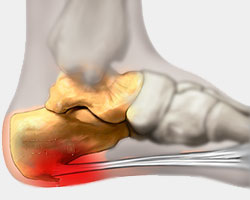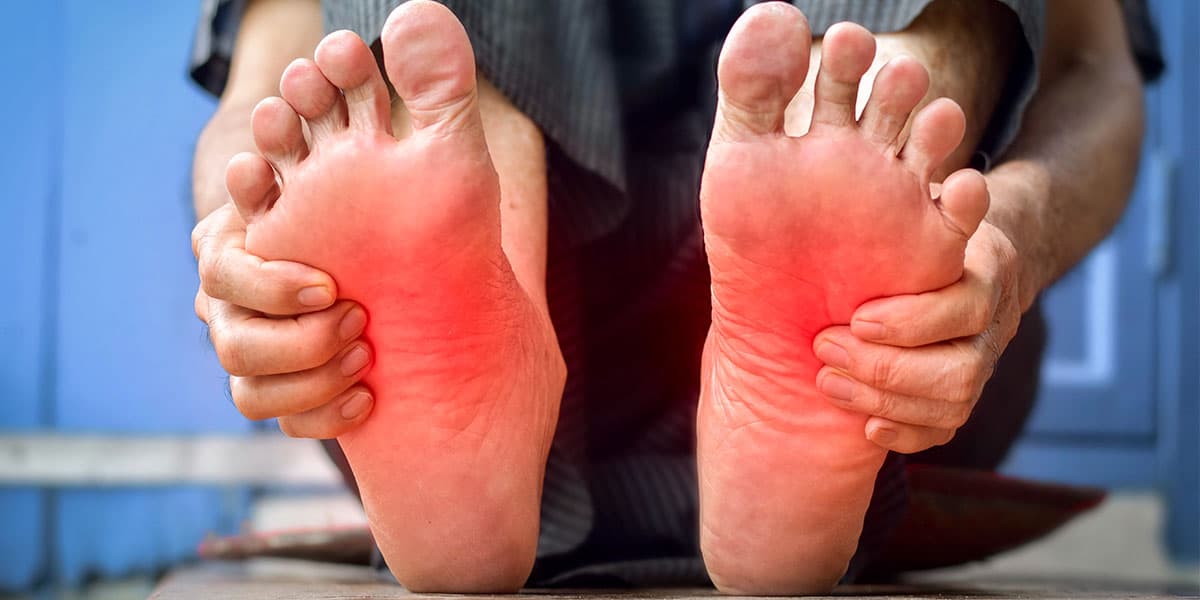- Home
- Foot & Ankle Conditions
- Heel Pain
Heel Pain
- Published 11/3/2023
- Last Reviewed 4/11/2024

Heel pain can make it difficult to participate in your normal daily activities. If it hurts to play sports, go for a walk, or even just stand in your kitchen, your day-to-day life can become almost unbearable. At University Foot and Ankle Institute (UFAI), our podiatrists are experts in resolving heel pain.
To properly address your heel pain, we first need to determine the cause. There are many potential causes of heel pain and each requires a different type of treatment or intervention.
20,457 Total 1st Party Reviews / 4.9 out of 5 Stars
 My experience with UFAI was pleasant as always.The office staff is friendly and accommodating. Dr.Franson always displays patie...Sunny S.
My experience with UFAI was pleasant as always.The office staff is friendly and accommodating. Dr.Franson always displays patie...Sunny S. The doctor and staff always provides excellent treatment and service.Dorothy W.
The doctor and staff always provides excellent treatment and service.Dorothy W. SO HAPPY TO FINALLY FIND A DOCTOR AND ASST I FEEL COMFORTABLE WITH !! I WAS VERY PLEASED WITH THE DR GINA AND HER MALE ASST T...Marguerite S.
SO HAPPY TO FINALLY FIND A DOCTOR AND ASST I FEEL COMFORTABLE WITH !! I WAS VERY PLEASED WITH THE DR GINA AND HER MALE ASST T...Marguerite S. They really try hard to make me feel complete and on point.Lester S.
They really try hard to make me feel complete and on point.Lester S. Dr Franson is a wonderful doctor he really cares about the health of his patients and really listen to the needs of them. I wo...Christina V.
Dr Franson is a wonderful doctor he really cares about the health of his patients and really listen to the needs of them. I wo...Christina V. The doctor was very thorough and caring.Erika F.
The doctor was very thorough and caring.Erika F. Excellent job. Have a Merry Christmas and a Happy New YearValerie S.
Excellent job. Have a Merry Christmas and a Happy New YearValerie S. Office and examination rooms are very clean and comfortable. Staff are very professional and friendly.Myrna M.
Office and examination rooms are very clean and comfortable. Staff are very professional and friendly.Myrna M. I have been to other locations and it was ok. The staff at the Westlake Village location is exceptional.Lynne B.
I have been to other locations and it was ok. The staff at the Westlake Village location is exceptional.Lynne B. Appointments always went smoothlyArthur H.
Appointments always went smoothlyArthur H. Dr. Jafary Is a Excellent surgeon, Extremely knowledgeable friendly polite and very courteous to his patients. He is a pleasure...Chris S.
Dr. Jafary Is a Excellent surgeon, Extremely knowledgeable friendly polite and very courteous to his patients. He is a pleasure...Chris S. Great serviceDavid K.
Great serviceDavid K.
-
 Listen Now
Could Feet Be the Windows to Your Health?
Read More
Listen Now
Could Feet Be the Windows to Your Health?
Read More
-
 Listen Now
How Many Steps Do I Need A Day?
Read More
Listen Now
How Many Steps Do I Need A Day?
Read More
-
 Listen Now
Bunion Surgery for Athletes: Can We Make It Less Disruptive?
Read More
Listen Now
Bunion Surgery for Athletes: Can We Make It Less Disruptive?
Read More
-
 Listen Now
Bunion Surgery for Seniors: What You Need to Know
Read More
Listen Now
Bunion Surgery for Seniors: What You Need to Know
Read More
-
 Listen Now
Should I See a Podiatrist or Orthopedist for Foot Pain and Ankle Problems?
Read More
Listen Now
Should I See a Podiatrist or Orthopedist for Foot Pain and Ankle Problems?
Read More
-
 Listen Now
Non-Surgical Treatment for Plantar Fasciitis – What Are Your Options?
Read More
Listen Now
Non-Surgical Treatment for Plantar Fasciitis – What Are Your Options?
Read More
-
 Listen Now
What Is Erythromelalgia?
Read More
Listen Now
What Is Erythromelalgia?
Read More
-
 Listen Now
Moore Balance Brace: Enhance Stability and Prevent Falls for Better Mobility
Read More
Listen Now
Moore Balance Brace: Enhance Stability and Prevent Falls for Better Mobility
Read More
-
 Listen Now
Swollen Feet During Pregnancy
Read More
Listen Now
Swollen Feet During Pregnancy
Read More
-
 Listen Now
What Are Shin Splints?
Read More
Listen Now
What Are Shin Splints?
Read More
-
 Listen Now
Do Blood Pressure Medicines Cause Foot Pain?
Read More
Listen Now
Do Blood Pressure Medicines Cause Foot Pain?
Read More
-
 Listen Now
How To Tell If You Have Wide Feet
Read More
Listen Now
How To Tell If You Have Wide Feet
Read More
-
 Listen Now
What To Do When Your Toenail Is Falling Off
Read More
Listen Now
What To Do When Your Toenail Is Falling Off
Read More
-
 Listen Now
Pediatric Bunion Surgery
Read More
Listen Now
Pediatric Bunion Surgery
Read More
-
 Listen Now
15 Summer Foot Care Tips to Put Your Best Feet Forward
Read More
Listen Now
15 Summer Foot Care Tips to Put Your Best Feet Forward
Read More














